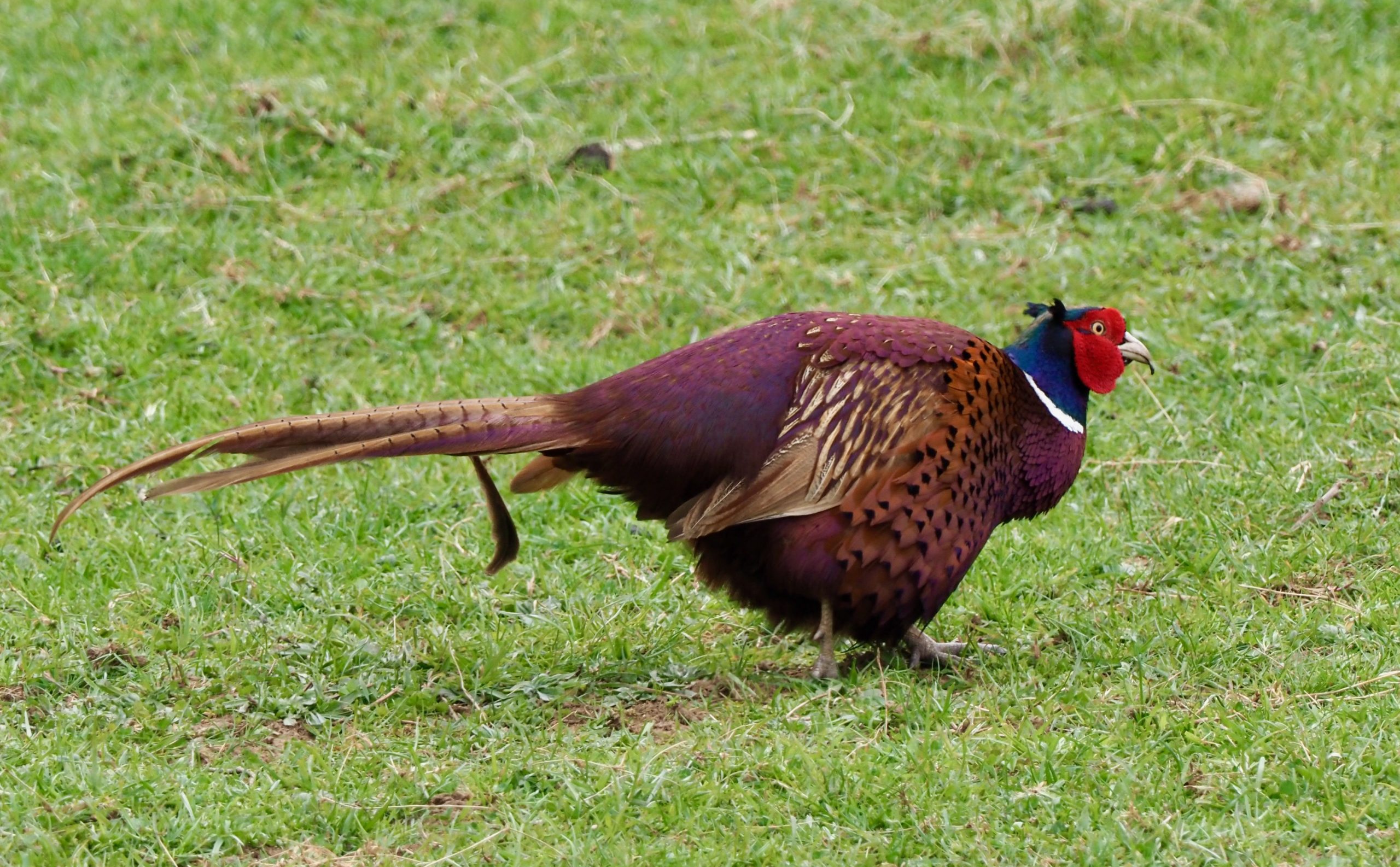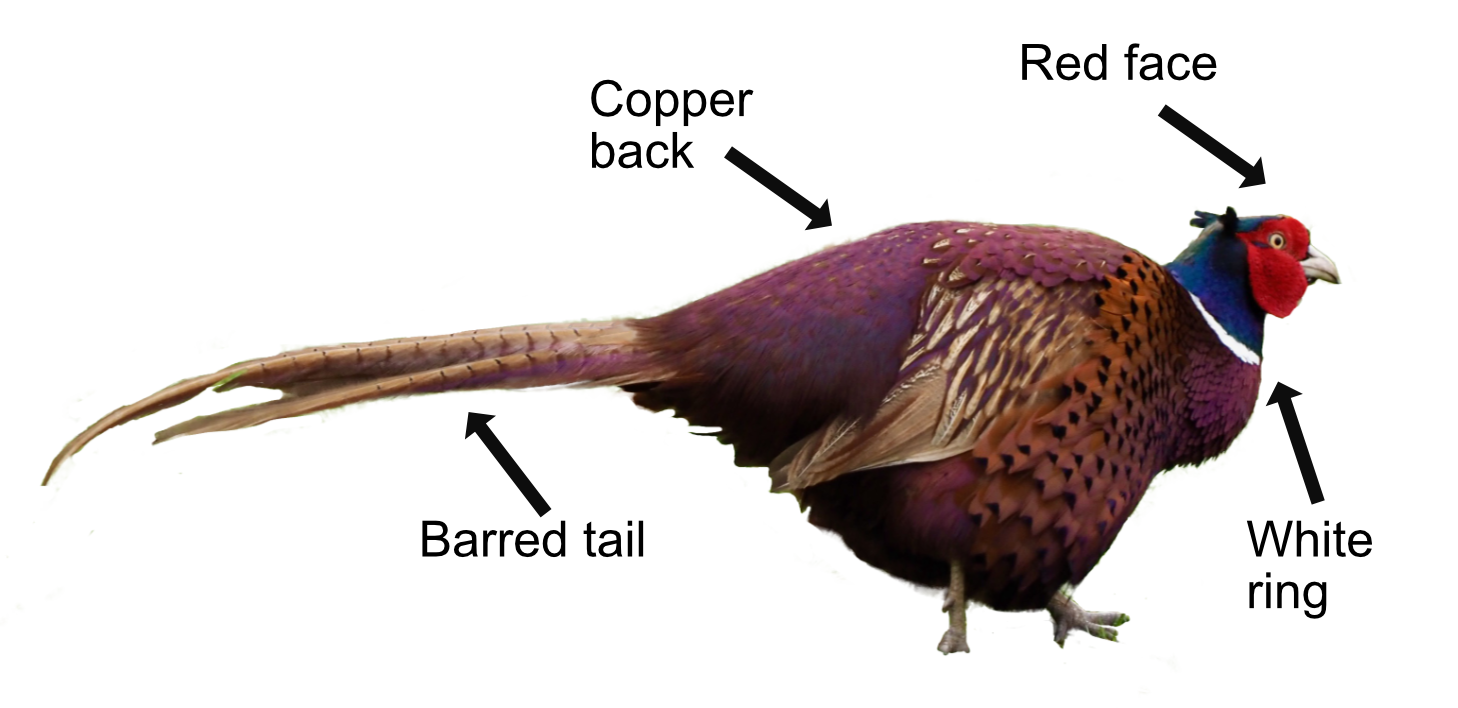
Pheasants are funny birds. They try really hard to hide in the grass, but lose their nerve at the last minute and make an explosive amount of noise when they burst out, giving you a heart attack. Snobby people will say they are not native to Britain as they were introduced, but this was by the Romans a long, long time ago. They are now definitely part of the family. The poor old Pheasant is one of the world's most hunted birds. Millions are reared every year and shot for sport.
The Common Pheasant is a chicken-sized bird but, unlike a chicken, they are rubbish at crossing the road as you see lots of squashed ones. Out in the countryside, you can find them at woodland edges, near thick hedges, or in grass and reed filled ditches. The male is brilliantly coloured with a shiny copper covered body marked with dark 'scallops' on the back and sides. He has a metallic green head and neck with a red face and small red ear tufts. He has a long, ginger coloured, barred tail and sometimes sports a fashionable white neck ring. The female is smaller, pale brown with dark flecks on her upper parts and tail. Youngsters initially look like mum to make it easier to hide. Their call is a distinctive "kutuk-kutuk".
They are at home on the ground but will roost in trees to keep away from foxes. When not suddenly bursting from cover, they more often run away, looking almost comical. Pheasants usually hang about in small flocks, with the males having a harem of several females who gaze on him adoringly in all his snazzy colours.
Pheasants eat a wide range of food including grains, worms, spiders, green shoots, ants, beetles, and berries. Basically, anything they can find on the ground. They are not fussy eaters.

Their nest is a scrape on the ground which is lined with grass and leaves, frequently under dense cover or under a hedge. The 6-15 pale olive green coloured eggs (usually about 10) hatch after 23 days. The young leave the nest when only a few hours old and can feed themselves. The young Pheasants grow quickly and can fly after 12 days. The youngsters hang about with mum for 2 months while dad stands around looking pretty and not having much to do with them. Mind you, if he has three females that would be 45 youngsters (3x15) to tell bedtime stories to, so you can understand why he stays away.
It is difficult to estimate the 'wild' population of Pheasants as they release so many for shooting. Up to 40 million pheasants (yes, 40 million) are released into the countryside every year. Pheasant farming is a common practice and birds are supplied for hunting and to restaurants. They can only be shot in the shooting season from October to the end of January, but that is probably not much comfort for Mr Pheasant. Never in the history of life has any species faired so well because it was so good at dying. Game keepers protecting their Pheasant chicks has, in the past, led to the killing of birds of prey. This is now banned and birds of prey are protected by law.
Their Latin name is 'phasianus colchicus' were 'phasianus' means 'pheasant' and 'colchicus' means 'of Colchis' as this is where they originally came from. Colchis is now modern day Georgia, a country on the Black Sea.